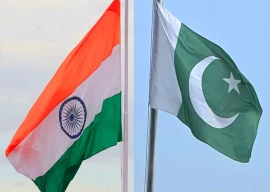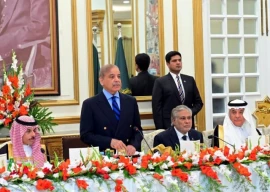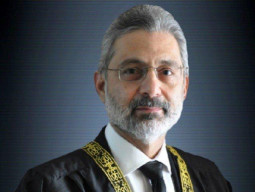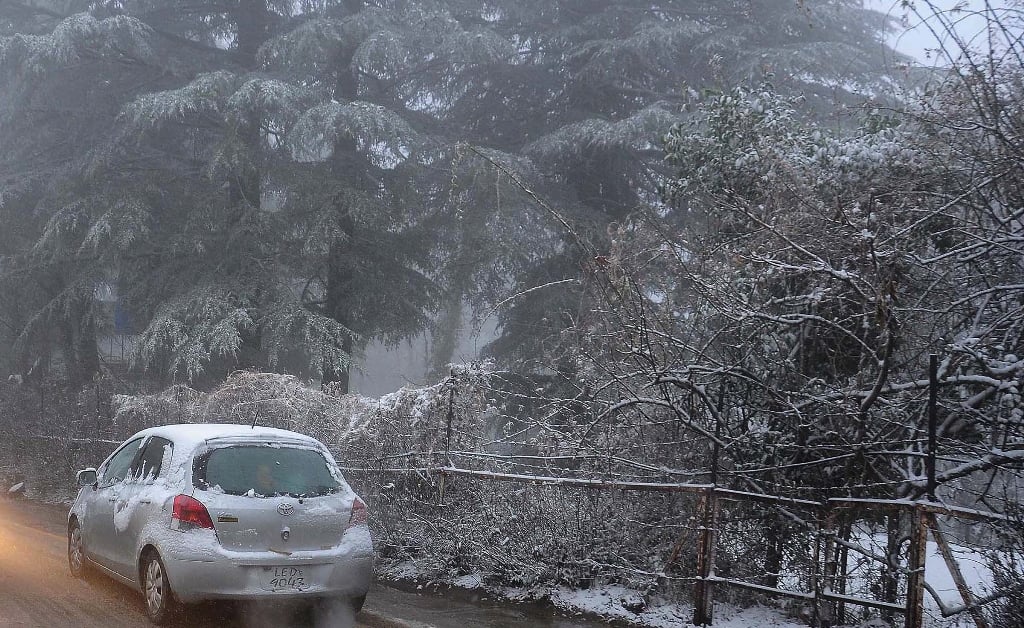
From cooking for dictators to rushing to accommodate Barack Obama's love of cheese -- a collection of French state dinner menus offered a unique insight into 150 years of diplomatic and gastronomic history on Wednesday.
The 4,000-plus menus were on display in Paris before going up for auction on Friday, with the oldest dating back to an imperial dinner given by Napoleon III in 1868 that carries a few wine stains from the moment.
They offer a who's who of royalty, statesmen and dictators, from John F Kennedy and Nelson Mandela to Saddam Hussein and Vladimir Putin -- right up to the sumptuous meal at Versailles for King Charles III last year.
They were obsessively collected by a Lyons-based chef, Christophe Marguin, who has put them up for auction with the Millon auction house at estimations ranging from 10 to 1,500 euros ($1,600) per lot.
Some are printed on beautiful silk, and one for US president Jimmy Carter features an original lithograph by painter Marc Chagall.
They hint at the complex logistics that surround diplomatic moments -- such as the commemorations for the 70th anniversary of the D-Day landings in 2014 when then-president Francois Hollande had to dash from a meal with Obama to another with Putin.
Having enjoyed a blue lobster salad and grilled sea bass, Obama messed with the delicate timing by asking for a cheese course that was not on the tight menu schedule "almost causing a diplomatic incident," Pierre Marquis, expert with Cabinet Poulain, who are assisting with the auction, told AFP.
Read: New food menu approved for prisons
Those logistics pale compared to the meal for 23,000 local mayors, held in the Tuilerie Gardens in 1900, that required seven kilometres of tablecloth, 125,000 plates, 600 cooks, 2,200 servers, 2,000 kilos of salmon, 1,200 litres of mayonnaise and 39,000 bottles of wine.
"We see the evolution of international relations. Visits at the end of the 19th century were much rarer, so they were exceptional events with several meals at the Elysee, sometimes at Versailles... often with military parades and a programme of opera or theatre," said Marquis.
Some menus carried subtle messages.
When France was trying to ensure close ties with both Russia and Britain in 1897, the dinner for Russian Tsar Nicolas II included both Sturgeon from the Volga and "Ananas a la Victoria" -- a pineapple dessert named after the British queen.
It is the French president who usually has the final call on the menu, but there is back-and-forth to ensure it fits the tastes of the guests.
For one visit, Queen Elizabeth II was offered two choices -- with foie gras or without -- for fear of offending her environmentally conscious son Charles.
"But it was the queen that decided, and clearly she liked foie gras, so it stayed in," Marquis said.



























COMMENTS
Comments are moderated and generally will be posted if they are on-topic and not abusive.
For more information, please see our Comments FAQ